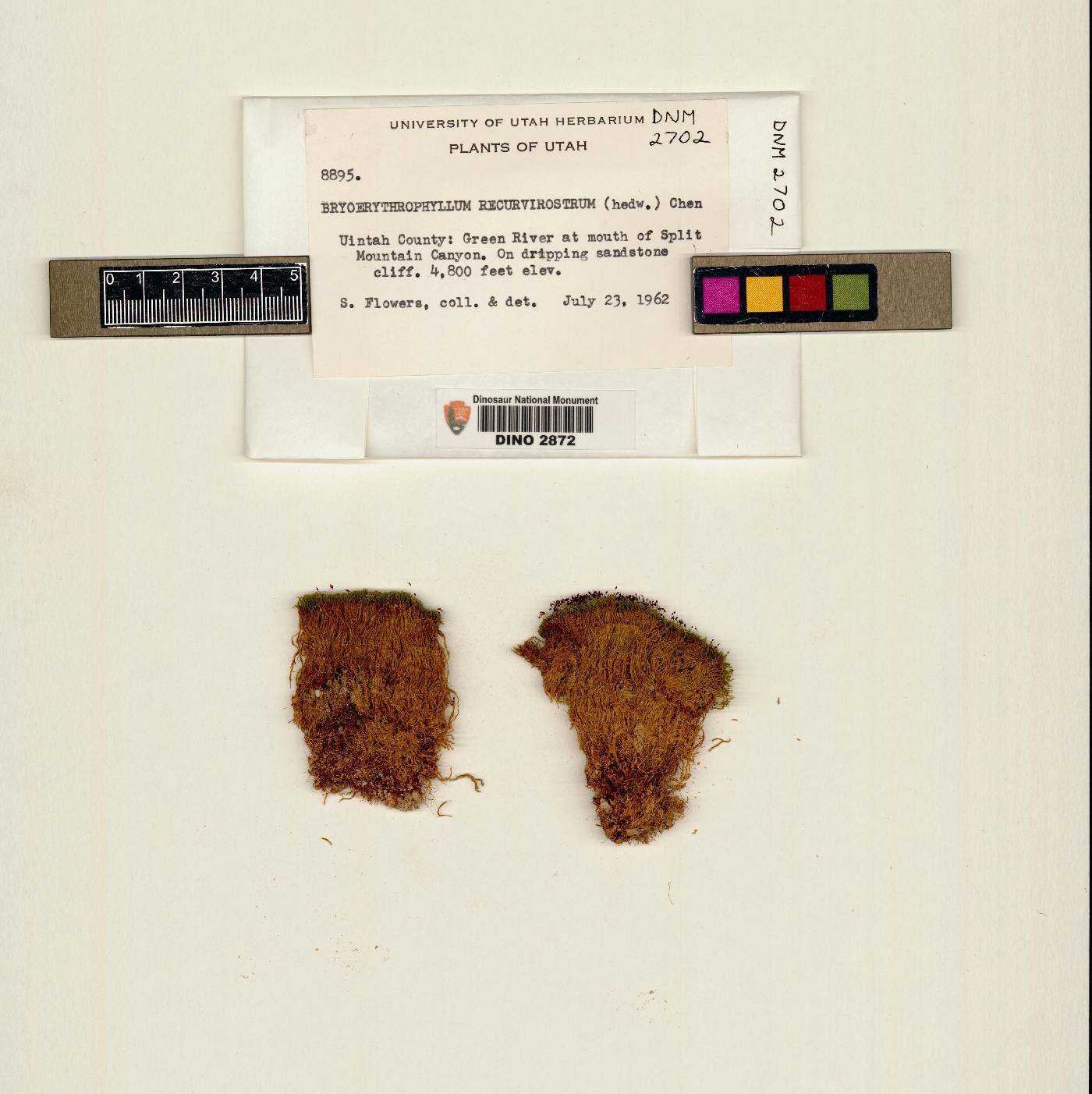
|
Family: Pottiaceae |
Plants turf-forming or loosely cespitose, green distally, red-brown proximally. Stems short or up to 3 cm, branching occasionally; hyalodermis usually absent, sclerodermis usually present, central strand usually present; axillary hairs several cells long, the proximal 1-2 cells usually all hyaline. Stem leaves appressed when dry, spreading when moist; ovate to lanceolate, adaxial surface often grooved along costa; base usually ovate to oblong and sheathing; distal margins recurved near base or to near apex, occasionally plane, entire or more often dentate above, sometimes bordered by 3-4 rows of thick-walled cells; apex rounded-obtuse to acute; costa ending a few cells before apex to short-excurrent, adaxial outgrowths absent, adaxial cells quadrate or seldom elongate in 2-6 rows; transverse section semicircular, adaxial epidermis present, adaxial stereid band present, guide cells 2-4 in 1 layer, hydroid strand occasionally present, abaxial stereid band present, crescent-shaped in section, abaxial epidermis usually present; differentiated proximal cells filling most of base medially, rectangular, little wider than distal cells to bulging, 2-5:1, walls of basal cells usually thin and hyaline; distal medial cells subquadrate to shortly rectangular, small, 1(-2):1, 1-stratose or seldom 2-stratose; papillae solid or occasionally hollow, 2-fid, or 4-6 projections per lumen (occasionally flattened or compound), cell walls evenly thickened, weakly sinuose, flat to bulging superficially. Specialized asexual reproduction occasionally by uni- or multi-cellular gemmae, occurring in leaf axils, or by irregularly obovoid multicellular brood bodies sometimes borne on rhizoids in the soil. Sexual condition dioicous or occasionally monoicous, rarely polygamous; perichaetia terminal, interior leaves usually sheathing in proximal half, long-oval to long-lanceolate, longer than the cauline, laminal cells rhomboid in proximal half. Seta elongate, usually more than 1 cm. Capsule stegocarpous, theca ellipsoidal to cylindric, occasionally curved, short to rather long, annulus of 1-2 rows of vesiculose cells, often revoluble or deciduous in pieces; operculum short-conic to short-rostrate; peristome absent, rudimentary or of 32 teeth, these linear, straight or twisted to 2-4 times counterclockwise. Calyptra cucullate. Spores small, lightly papillose, light brown. KOH laminal color reaction red, occasionally oran Bryoerythrophyllum was originally segregated from Didymodon (at the sectional level) by the red color of the plants, which is much heightened in 2% KOH solution. Chen P. C. (1941) produced a fine study of the Asian representation of the genus, and R. H. Zander (1978g) did a synopsis of the genus for the New World, and later (1980, 1981) added species with elongate, twisted peristomes, emphasizing a reduction series in peristome development. The D. vinealis group, however, is red in KOH but differs in the round to semicircular costal section with an abaxial stereid band rounded to semicircular in section (Bryoerythrophyllum generally has a somewhat more flattened section, with an abaxial stereid band reniform in section), and the leaf margins are not dentate. Bellibarbula differs by the sinuous costa beyond mid leaf and the poorly differentiated proximal leaf cells. Barbula species are yellow in KOH.
|
This project was made possible in part by the Institute of Museum and Library Services [MG-70-19-0057-19].
Powered by Symbiota



